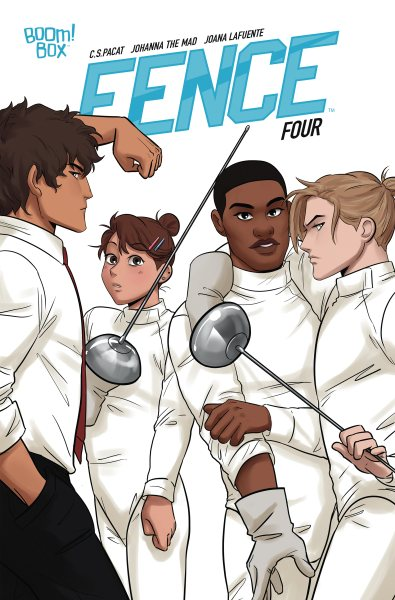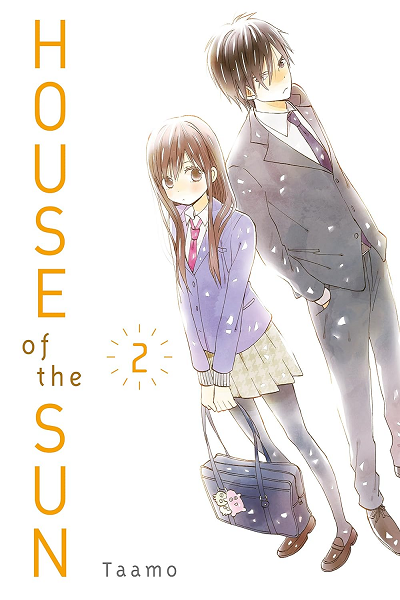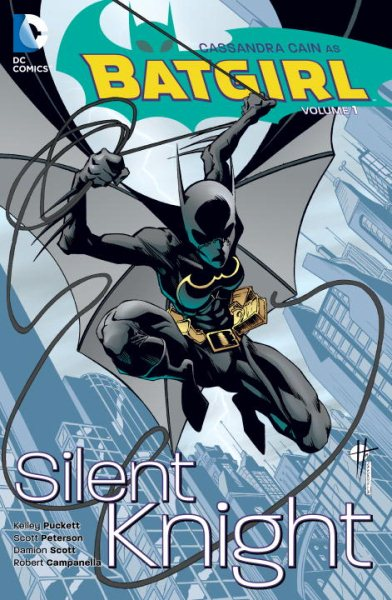Hey y’all! I’ve got another batch of digital comics for you. Since this list ended up leaning hard on hoopla to the exclusion of Libby and Boundless, I thought I’d take a moment to talk about how hoopla is particularly appealing to graphic novel readers. If you’re already an avid user of hoopla, feel free to skip ahead to the list.
On top of offering an impressive library of graphic novels, hoopla makes zooming in on panels quick and easy. On mobile or tablet, double-tap on a panel to zoom in. And when you swipe, instead of going to the next page, you’ll go to the next panel. Double-tap again to zoom back out to the full page.
In your browser, you can click the gear in the lower right corner to set hoopla to zoom back out at the end of a page or when you start a new page. This ensures that you never miss those beautiful and creative panel layouts. This has become my preferred way to read comics. It simulates the experience of reading a physical comic–taking in the big picture before looking more closely at the panels–and combines that with the convenience of being digital.
Of course, physical books will always be their own unique pleasure, but hoopla is the best digital comic experience I’ve had so far. Libby and Boundless have their own strengths, and I’ll likely discuss those another time. But when patrons ask about the differences between the three apps, I tend to emphasize hoopla as the go-to app for graphic novels.
Alright, on with the recommendations!
 Fence (2017–2018)
Fence (2017–2018)
Written by C.S. Pacat; Illustrated by Johanna the Mad
Read Fence on hoopla | Find Fence on our shelves
In the immortal words of fictional horror author Garth Marenghi, “I know writers who use subtext, and they’re all cowards.”
Sports manga have a long history, being about as old as the medium itself. And because of the gendered nature of sports, these manga tend to feature extremely intense emotional relationships between members of the same gender. As such, sports manga tends to have a lot of gay subtext.
Like, a lot of gay subtext.
And fans run with that subtext, as they are wont to do. Oftentimes, this gives birth to fanfiction; lots and lots and lots of fanfiction. But sometimes, that “fine, I’ll do it myself” attitude gives birth to works featuring wholly original characters. And that’s where Fence comes in.
Fence wears its inspiration on its sleeve. Determined but inexperienced fencer Nicholas Cox is utterly trounced by fencing prodigy Seiji Katayama. Nick swears to defeat Seiji, only to end up at the exact same school and on the exact same team as Seiji upon entering high school.
This premise is lifted word-for-word from volleyball manga Haikyu!! Change the name and the sport, and they are largely the same. However, this homage is a feature rather than a bug. Fence may borrow the premise from Haikyu!!, and it may make heavy use of stock characters like the playboy, the elite prodigy, the scrappy but inexperienced lead, and the rigorous technical genius. However, all this heavy use of pre-established genre conventions is in service of playing with those same genre conventions.
I wouldn’t go so far as to say that Fence is subverting expectations, save for the expectation of heteronormativity. The school Nick and the others attend is an all-boys school. So, that playboy I mentioned? All of his admirers and all the partners he loves and leaves are guys. Bobby, a prominent supporting character and Nick’s best friend, presents in an overtly feminine way and could easily be described as a little boy who is crazy, as teenage girls are so often stereotyped. It actually took me a few pages to realize Bobby was a boy. He lives this way, wearing a skirt and leggings as part of his school uniform, and no one questions or comments on it. He’s allowed to simply exist.
All of this queerness exists without question in Fence’s universe. No one comes out of the closet because there’s no closet to come out of. This comic is openly and unapologetically gay, and so are its characters. And there are a lot of people out there who need stories like this.
And if you’re not personally moved by that open queerness, Fence still has a lot to offer. The art has a great balance of cuteness and intensity that many of the most popular anime and manga have. The heavy use of stock characters allows the author to focus on crafting a tight and efficient narrative, so this is a great read for those who get bored with excessive amounts of set-up. On a similar note, while the series does get into some of the technical aspects of the sport, I never felt like it was getting bogged down in exposition. Explanations are quick and concise. This contributes to a narrative pace that makes for a quick and breezy read.
I enjoyed every single page of Fence. It’s totally worth giving a look.
 House of the Sun (2010–2015)
House of the Sun (2010–2015)
Written and illustrated by Ta’amo
Read House of the Sun on hoopla
Coming from a neglectful home, Mao spent much of her childhood at Hiro’s house across the street. Now a senior in high school, Mao has a new step-family, but she feels more like a stranger in her own home than ever before.
Hiro, now a man with an office job, has faced his own misfortunes over the years. After the sudden death of his parents, Hiro’s siblings were sent off to separate foster homes. Hiro stayed behind to keep the family house, hoping that one day his family may reunite.
Seeing Mao’s circumstances, Hiro takes her into his lonely home. It should be the ideal solution for both of them. Hiro doesn’t have to be alone, and Mao can have a home where someone actually cares about her well-being. But, of course, this wouldn’t be much of a story if there wasn’t a problem.
The problem is that Mao has fallen in love with Hiro. But, given the circumstances, Hiro can’t openly return her feelings—no matter how much his heart yearns for her, as well.
This emotionally intense drama deals with neglect, grief and conflicting feelings and has a childhood friends-to-lovers romance at the center. Mao is an endearing main character who struggles to survive the hardships of selfish, emotionally neglectful parents. Hiro, meanwhile, tries to find the happiness he lost when his parents died, while also wanting to do right by Mao.
A bitter-sweet read, as heartwarming as it is heart-wrenching. If you grew up feeling neglected and unseen like Mao, I think this story will really resonate with you.
 Batgirl (2000–2006)
Batgirl (2000–2006)
by Kelley Puckett and Scott Peterson; illustrated by Robert Campanella and Damion Scott
Read Batgirl on hoopla | Find Batgirl on our shelves
I don’t recommend nearly enough cape comics, so let’s fix that. In 2000, DC Comics debuted the first ever ongoing Batgirl comic. However, our title character is not the Batgirl most of you are familiar with.
Much like Jason Todd before her, Cassandra Cain is a member of Batman’s family of sidekicks, confidants, partners and helpers that rarely see the light of day outside of comics. Some of you might recognize her name from the 2020 film Birds of Prey film, starring Margot Robbie. However, that young pickpocket is a far cry from the Cassandra of the comics.
Cass debuted alongside her father, David Cain, in the Batman storyline No Man’s Land. Cain believed that a human being could be raised in such a way that violence would be their native language; Cass is the result of his experiments. Cass, much like Batman himself, falls into a category of superheroes that technically lack “superpowers” but nonetheless are capable of superhuman feats due to intensive training. Rather than the “language of violence” David Cain intended to teach her, Cassandra’s native language is body language. Every subtle movement of the human body speaks volumes to her. Joy, pain, sadness, excitement, euphoria and despair; Cass can see it all with a glance.
I won’t go further into her backstory since you’ll learn more once you give Batgirl a read. And you absolutely should read it! Cass is largely isolated from the rest of the DC Comics continuity during this series, so this series is very accessible to new comic book readers. If you know who Batman is, then you already know enough to follow along. You’ll learn everything else right alongside Cass.
I found Cass to be such a compelling main character, it’s hard to know where to start explaining her. She’s tough but sweet. She’s a cocky perfectionist. She’s utterly incapable of maintaining a healthy work-life balance. She can barely talk, and she’ll still roast you like a Christmas ham. She has mommy and daddy issues with no less than four different parental figures. She’s trying really, really hard to learn how to read. She can probably beat up Batman. She can definitely beat up everybody else.
You probably get the point; Cass is a lot of things. A very intense, highly driven character with a desperate need to do some good in this broken world. She’s had a few different code names since her debut, but it all started with Batgirl. Cassandra Cain is my favorite character to take on the role, and my favorite superhero in general. Give this book a read and see what you think of her.
